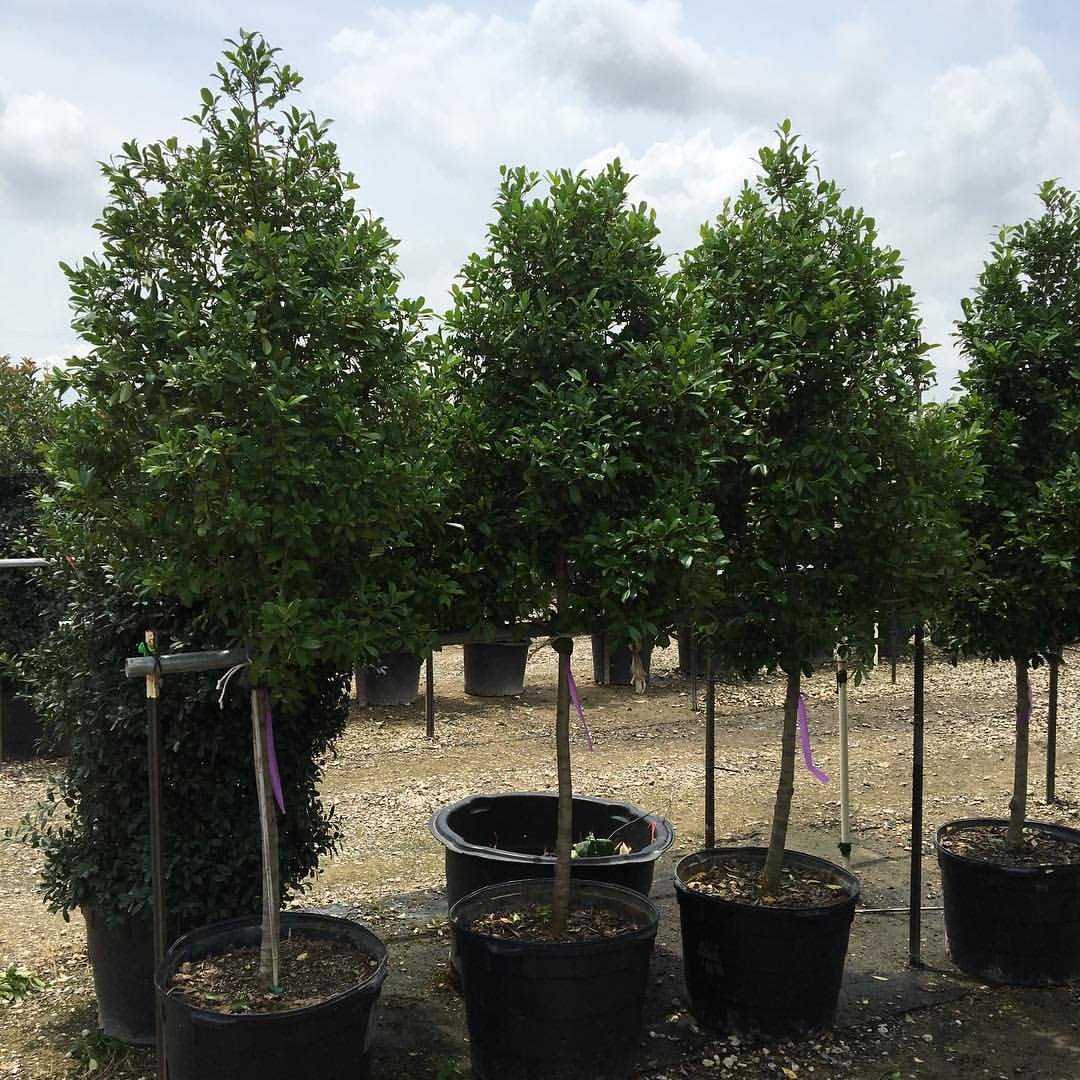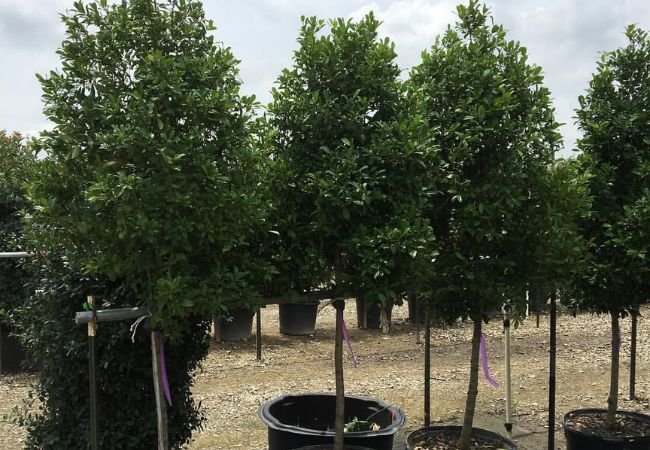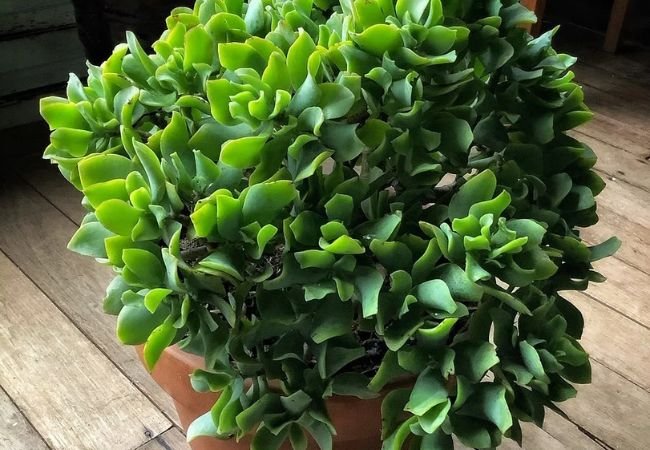Get the ultimate guide to growing Eagleston Holly Trees. Discover planting tips, care instructions and how to maximize their ornamental value.
Are you looking to add a touch of year-round elegance and lush greenery to your landscape? Look no further than the Eagleston Holly Tree. This stunning evergreen, with its glossy leaves and compact growth habit, can transform any garden into a sophisticated, low-maintenance oasis. In this comprehensive guide, we’ll explore everything you need to know about growing and caring for Eagleston Holly Trees, from planting to pruning and beyond. Get ready to elevate your garden with this versatile and beautiful tree!
Here’s a short information chart for Eagleston Holly Tree:
| Aspect | Information |
|---|---|
| Botanical Name | Ilex x attenuata ‘Eagleston’ |
| Common Name | Eagleston Holly |
| Plant Type | Evergreen tree |
| Family | Aquifoliaceae |
| Native Range | Cultivar originated in North America |
| Zones | Typically zones 6-9 |
| Sun Exposure | Full sun to part shade |
| Soil Type | Well-drained, acidic soil |
| Watering | Regular; moderate water needs |
| Growth Habit | Pyramidal, upright |
| Height/Spread | 15 to 25 feet tall, 8 to 12 feet wide |
| Special Features | Glossy, dark green foliage, red berries (female plants), attracts birds, deer resistant |
What is an Eagleston Holly Tree?

Before we dive into care tips, let’s get acquainted with this charming tree. The Eagleston Holly (Ilex x attenuata ‘Eagleston’) is a hybrid holly cultivar that combines the best features of its parent species. It’s prized for its pyramidal shape, dense foliage and ability to thrive in various climates. This evergreen tree offers year-round interest with its dark green leaves and occasional red berries.
The Eagleston Holly gets its name from its developer, Willard N. Eagleston, who introduced this cultivar in the 1960s. Since then, it has become a favorite among landscapers and homeowners for its versatility, low maintenance requirements and ornamental value.
Key Features of Eagleston Holly Trees:
- Height: Typically grows 20-30 feet tall
- Spread: Usually 10-15 feet wide
- Growth rate: Moderate, about 1-2 feet per year
- Foliage: Dark green, glossy leaves
- Berries: Small red berries (on female plants)
- Shape: Naturally pyramidal, can be pruned to various shapes
Now that we’re familiar with this beautiful tree, let’s explore how to make it thrive in your garden.
Planting Eagleston Holly Trees
Proper planting is crucial for the long-term health and success of your Eagleston Holly. Follow these steps to give your tree the best start:
- Choose the right location: Eagleston Hollies prefer full sun to partial shade. They can tolerate a variety of light conditions but thrive in spots with morning sun and afternoon shade.
- Prepare the soil: These trees adapt to various soil types but prefer well-draining, slightly acidic soil (pH 5.0-6.5). If needed, amend your soil with organic matter to improve drainage and fertility.
- Dig the hole: Make it twice as wide as the root ball and just as deep. This encourages roots to spread outward.
- Plant at the right depth: The top of the root ball should be level with or slightly above the soil surface.
- Backfill and water: Gently fill in around the roots with soil, tamping down to remove air pockets. Water thoroughly after planting.
- Mulch: Apply a 2-3 inch layer of organic mulch around the base, keeping it away from the trunk to prevent rot.
Caring for Your Eagleston Holly Tree
Once your Eagleston Holly is in the ground, it’s time to nurture it to its full potential. Here are essential care tips to ensure your tree thrives:
Watering
Eagleston Hollies prefer consistently moist soil but can tolerate short periods of drought once established. Follow these watering guidelines:
- Water deeply and regularly during the first growing season to establish a strong root system.
- Once established, provide about 1 inch of water per week, either from rainfall or irrigation.
- Use a soaker hose or drip irrigation for efficient watering.
- Avoid overwatering, as this can lead to root rot.
Fertilizing
Eagleston Hollies benefit from regular fertilization to maintain their lush, green foliage:
- Apply a balanced, slow-release fertilizer formulated for acid-loving plants in early spring before new growth emerges.
- Use a fertilizer with an NPK ratio of 12-4-8 or similar.
- Avoid over-fertilizing, as this can lead to excessive growth and reduced cold hardiness.
Pruning
Pruning is essential for maintaining the shape and health of your Eagleston Holly:
- Prune in late winter or early spring before new growth begins.
- Remove any dead, damaged, or crossing branches.
- To maintain a formal shape, lightly shear the outer foliage in late spring or early summer.
- For a more natural look, selectively prune individual branches to maintain the tree’s pyramidal shape.
Pest and Disease Management
Eagleston Hollies are generally resistant to pests and diseases, but it’s always good to be vigilant:
- Watch for common pests like scale insects or spider mites.
- If pests appear, try using horticultural oil or insecticidal soap.
- Prevent fungal diseases by ensuring good air circulation and avoiding overhead watering.
Landscaping with Eagleston Holly Trees
Now that you know how to care for your Eagleston Holly, let’s explore some creative ways to incorporate it into your landscape:
- Focal point: Use as a specimen tree in the center of a garden bed or lawn.
- Privacy screen: Plant a row of Eagleston Hollies to create an elegant, evergreen privacy screen.
- Foundation planting: Their compact size makes them perfect for planting near your home’s foundation.
- Framing: Use a pair of Eagleston Hollies to frame an entrance or garden feature.
- Topiary: With regular pruning, these trees can be shaped into various formal designs.
- Container gardening: Grow in large containers for patios or entryways.
- Winter interest: The evergreen foliage and occasional red berries provide year-round beauty.
Companion Plants for Eagleston Holly Trees
To create a harmonious and visually appealing landscape, consider pairing your Eagleston Holly with these complementary plants:
- Azaleas (Rhododendron spp.): These colorful shrubs thrive in similar conditions and provide a burst of spring color.
- Hostas (Hosta spp.): These shade-loving perennials add textural contrast to the holly’s glossy leaves.
- Ferns (various species): Delicate fern fronds create a beautiful understory beneath Eagleston Hollies.
- Liriope (Liriope muscari): This grass-like perennial makes an excellent ground cover around the base of the tree.
- Camellia (Camellia spp.): These evergreen shrubs complement the holly’s foliage and provide winter blooms.
Seasonal Interest of Eagleston Holly Trees
One of the many charms of Eagleston Holly is its year-round appeal. Here’s what you can expect throughout the seasons:
- Spring: New growth emerges, brightening the tree with fresh, light green foliage.
- Summer: The tree maintains its lush, dark green appearance, providing cooling shade.
- Fall: While the leaves don’t change color, female trees may produce bright red berries.
- Winter: The evergreen foliage and berries (if present) provide winter interest and food for birds.
Eagleston Holly Trees in Different Climates
Eagleston Hollies are adaptable to various climates but thrive in USDA hardiness zones 6-9. Here’s how they perform in different regions:
- Cold climates (Zone 6): Provide winter protection for young trees. Choose a sheltered location to protect from harsh winds.
- Temperate climates (Zones 7-8): Ideal conditions for Eagleston Hollies. They will thrive with minimal care.
- Warm climates (Zone 9): Provide afternoon shade and ensure consistent moisture to prevent heat stress.
Troubleshooting Common Issues
Even with the best care, you might encounter some challenges with your Eagleston Holly. Here are some common issues and how to address them:
- Yellow leaves: This could indicate nutrient deficiency or overwatering. Check soil drainage and consider applying an iron supplement.
- Leaf drop: Sudden leaf drop may be due to transplant shock or extreme weather. Ensure consistent watering and protect from harsh conditions.
- Lack of berries: Eagleston Hollies are generally female, but they need a male holly nearby for pollination. Consider planting a male holly cultivar if you want berries.
- Sparse growth: This may be due to insufficient light. Consider pruning nearby plants or relocating the tree to a sunnier spot.
Environmental Benefits of Eagleston Holly Trees
Beyond their ornamental value, Eagleston Hollies offer several environmental benefits:
- Wildlife habitat: Provides shelter for birds and small animals.
- Bird food: The berries are a valuable food source for many bird species in winter.
- Air purification: Like all trees, Eagleston Hollies help clean the air and produce oxygen.
- Erosion control: The root system helps prevent soil erosion.
Using Eagleston Holly in Holiday Decorations
Eagleston Holly branches can be used to create beautiful holiday decorations:
- Cut branches in the morning for the best freshness.
- Use in wreaths, garlands, or centerpieces for a festive touch.
- If using berried branches, remember that they may drop berries as they dry.
Propagating Eagleston Holly Trees
If you want to expand your Eagleston Holly collection, you can propagate them through cuttings:
- Take 4-6 inch semi-hardwood cuttings in late summer or early fall.
- Remove lower leaves and dip the cut end in rooting hormone.
- Plant in a well-draining potting mix and keep moist.
- Place in a bright location out of direct sunlight.
- Roots should develop in 8-10 weeks.
Eagleston Holly Trees are versatile, low-maintenance evergreens that can add a touch of elegance and year-round interest to any landscape. With their glossy foliage, compact growth habit, and adaptability to various conditions, they’re an excellent choice for gardeners of all skill levels. By following these planting tips, care instructions, and creative landscaping ideas, you’ll be well on your way to creating a lush, sophisticated garden that you can enjoy in every season.
Remember, the key to success with Eagleston Hollies lies in providing the right growing conditions, consistent care, and a little bit of creativity in your landscape design. So go ahead, give this charming tree a try, and watch as it transforms your outdoor space into an elegant, evergreen oasis that you and local wildlife will love!








Leave a Reply